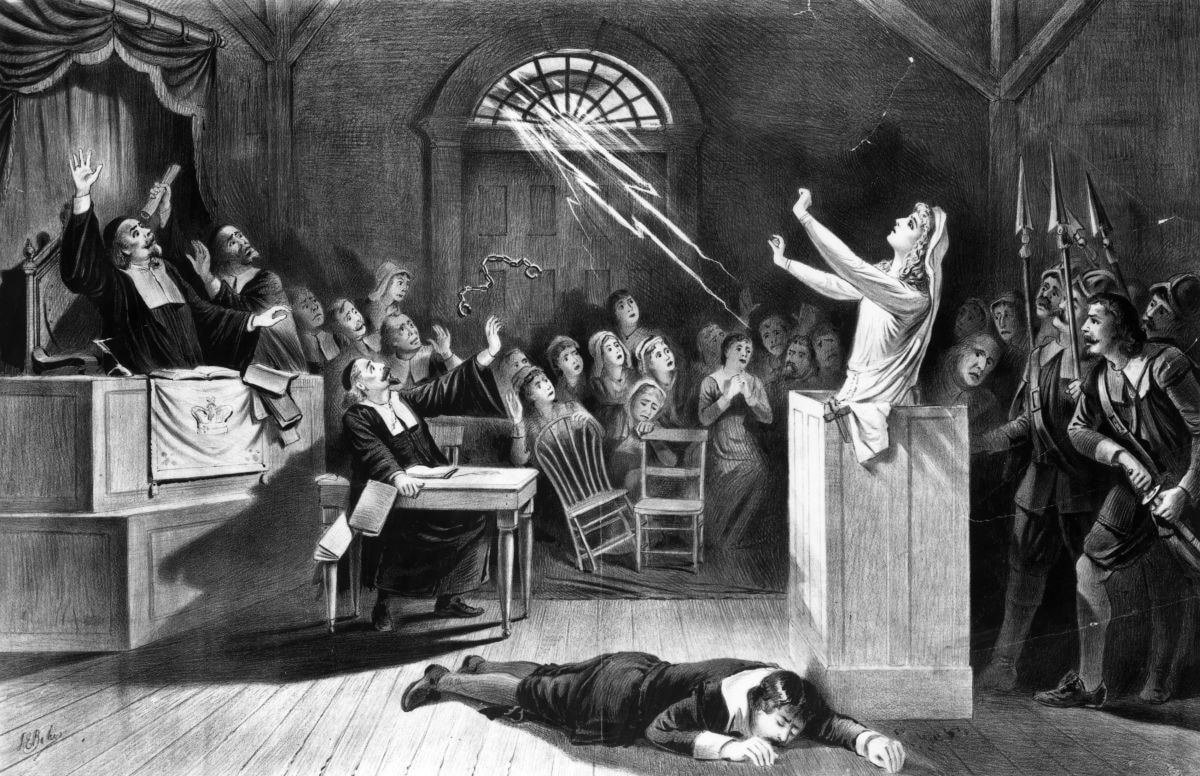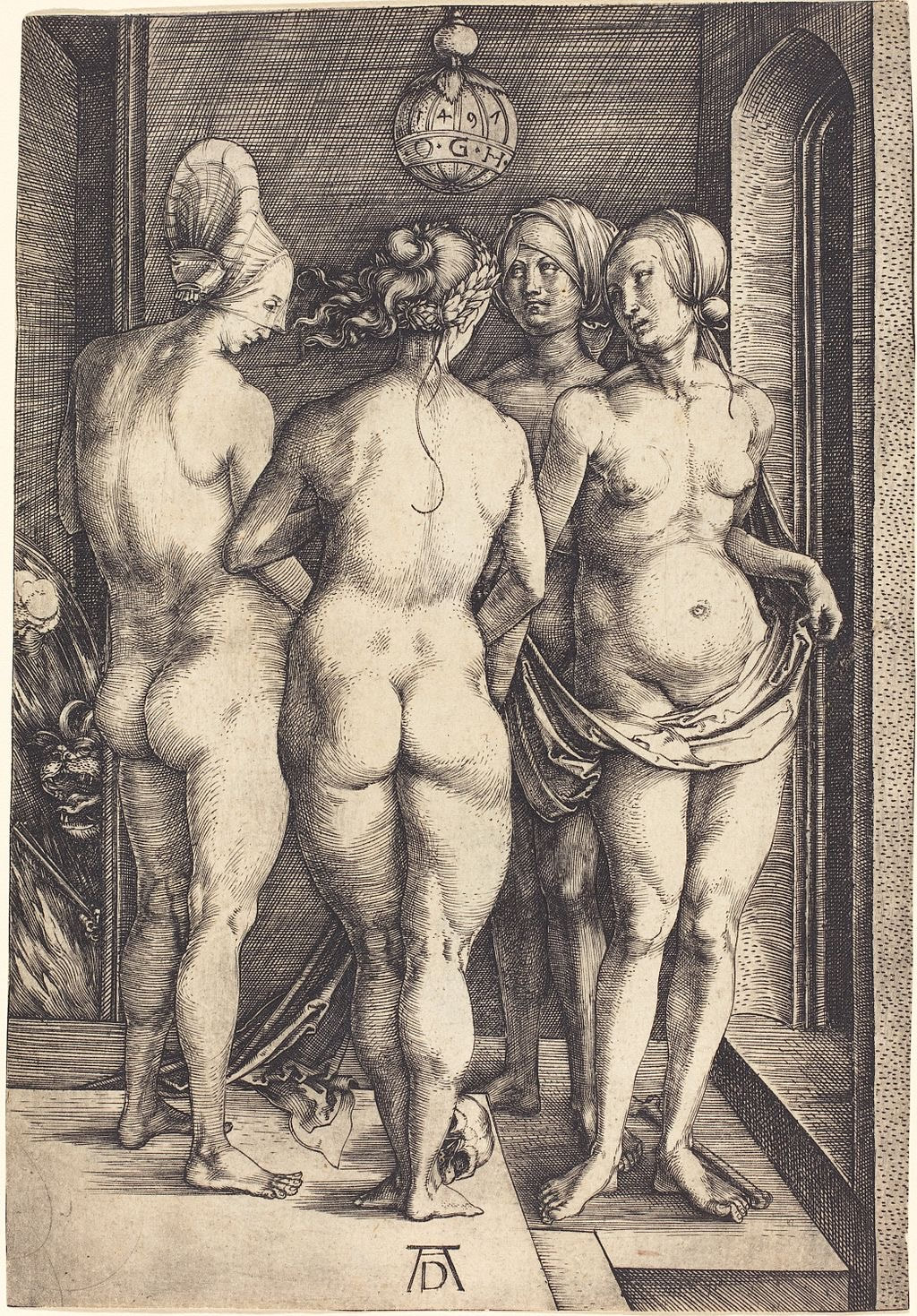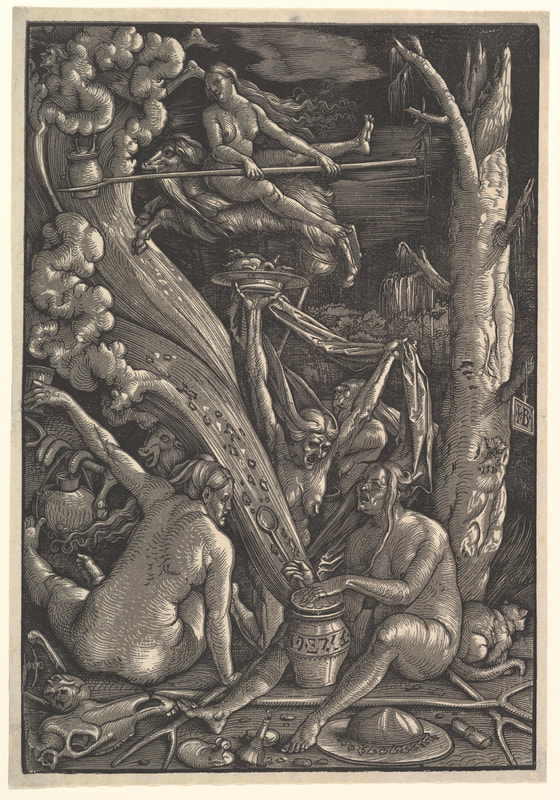|
by Saffron Sener  Joseph E. Baker’s 1892 lithograph, Witch No. 1 Joseph E. Baker’s 1892 lithograph, Witch No. 1 Joseph E. Baker’s 1892 lithograph, 'Witch No. 1'I’ve always loved witches. This isn’t to say I was that girl in high school who “practiced Wicca” and had a pet rat or tarantula or something of the like. But, I’m (too) well-versed on the Salem Witch Trials. I did have a major Edgar Allan Poe phase from middle school until the end of high school (only a bit drawn out). It’s almost certain I’ve seen more horror movies than you - which, I assure you, is not a brag; I’ve suffered through some truly terrible films to earn that title. Any open-ended paper I can write for one of my many history classes is, most surely, about witches. Maybe it’s that I see a bit of myself in the concept of a witch. Unadulterated rage (of a womyn), rejection of men for a life of seances and spells in the woods, a certain separation from society and lingering in the dark. I’m not ascribing myself to the trope of disgusting woman as witch seen in films like the Blair Witch Project (1999) - only described, never seen - or The Wizard of Oz (1939). Nor am I ascribing myself to the seductive femme fatale witches of films such as Suspiria (2018/1977). In terms of personhood, I am not opposed to a disgusting woman or femme fatale (though these representations are clear manifestations of male anxiety to the idea of a female who rejects men). But, I would rather align myself with the women executed throughout human history for allegedly practicing witchcraft - outcasts of society persecuted for the anxieties projected upon them. I find their stories far more interesting than Wicked (the musical). I find their stories, and the fears cast upon them, more interesting than the boiled down versions of witchiness we get in Hereditary (2018) and Into the Woods (the musical). I’m not even going to touch Harry Potter. But I’m not here to embark on a survey of witchcraft. Rather, I am here to discuss something that truly enrages me; the constant representation of female nude bodies as functions of horror in horror films. I’ve hinged this on witches because the most common representation of women in this genre is as witch, in my opinion (rivaled only by the Final Girl). Look to Hereditary (2018). Or Suspiria (2018). Or The Witch (2015). What is the common denominator of the witches represented here? Their nudity. Not only are these women posed as the villians of the story in their status as “evil” witches, but this is highlighted by their naked bodies. This reliance by horror filmmakers on the female body as an inherently scary thing is abhorrent. Why must each witch movie, like the three above, end in an orgy-like gathering of naked women, dirty and writhing in orgasmic pleasure? pain? Why is the climax of fear, the supposed most scary moment of the movie, depending on the audience’s supposed disgust for the female form (a disgust most definitely reinforced by cinematic moments such as these)? And why do these scenes always seem so similar to propaganda spread since ancient civilization as a way to stir up popular fear towards groups who dissent from the common authority? When I learned about the Bacchanalia of ancient Rome, and the efforts put in by senators to end these non-approved religious festivals, it all clicked. Livy, the ancient Roman historian, writes a scathing account of these events, noting in his History of Rome: “This pestilential evil penetrated from Etruria to Rome like a contagious disease...one way of corrupting...morals was through the Bacchanalia.” In their legislation against the Bacchanalia, Roman senators emphasized their perverse (and made up) sexual nature, their essential nudeness (again, made up), and their being a threat to the sanctity of the Roman pality (really, they were more a result of existing instability rather than a cause). They dehumanized the body, describing sexual relations with animals and luxuriant, gluttonous feasts to accompany. This propaganda, most certainly unsubstantiated and untrue, sparked the usage of the nude (female, as women played an integral role in apparently attracting participants of the Bacchanalia) body as a function of fear. This continues into the Middle Ages and beyond. Works like Albrecht Dürer’s 1497 engraving The Four Witches and Hans Baldung Grien’s 1510 woodcut The Witches are two of many examples; here, again, the women are depicted as naked, outside their norm and thus scary. European perceptions of the female body required its covering to be pure, chaste, and in its “proper” state - a woman’s body in the nude was equal to a complete corruption of the self. Clothing meant civility. Katherine Brown, in her novel, Foul Bodies: Cleanliness in Early America, writes: “nudity...evoked the base, animal nature of corrupt humanity and located spiritual uncleanness in a foul body” (page 15) which was highlighted by the “fundamental uncleanness of women” (page 16) and the equation of “female genitalia...with sexual sin” (page 36). She further notes that when European colonizers encountered Indigenous groups, they were “predisposed to believe that...nudity [was] a sign of both innocence and savagery” (page 44). Thus, it becomes clear that the function of one’s naked body in a public space is that of degradation and shame - a tool for white men to further establish their power over women and people of color. 'The Four Witches', Albrecht Dürer, 1497, engraving and 'The Witches', Hans Baldung Grien, 1510, woodcut. Witch-hunts, which plagued the European continent from the 15th to 19th centuries, were the bastard of the Reformation, initiated by religious inquisitors as an inversion of religion. Witches thus became evil incarnate, and over generations large-scale, authority-driven calls for the execution of witches was adopted by the masses. They grew to represent male paranoia about the female body and her rejection of him, as the process of becoming a witch developed around the narrative of coitus with the Devil and regular (nude) witches sabbaths. Witchcraft was given to us by the elite, by the government, by officials, and reworked to become a function of the masses. A fear that we all hold - a fear that reinforces patriarchal ideologies of womanhood and the corporeal body. A fear that serves those who are on top - (rich, learned, elite, ruling) white men - in controlling those below.
And today, it has culminated into a cheap fear tactic of horror filmmakers to invoke this centuries-long development of hatred for the female form, for fear of it. Because, obviously, a group of naked women can mean only two things: the object of the male gaze and a function of their pleasure OR a rejection of their gaze and thus a realization of their fear. So, a note to anyone making a horror film - posing the nakedness of witches as their most noticeable and disgusting and horrific aspect is over. We don’t do that anymore. It’s tired, it’s lazy, it’s male, and it’s time to find something actually scary. Am I asking for the deletion of witches from modern mainstream media? No. I am asking for care, and consideration of the role; a witch in a movie now is not just a witch. She is the culmination of centuries of pain and burden and murder women have endured for witchcraft, the demonization of their bodies in the name of fear, and the creation of an identity in reaction to male anxiety of rejection. She is a victim - of (figurative and literal) violence upon her body by fearful men - yet she is a strong female role model. Appreciate her.
0 Comments
Leave a Reply. |
Archives
March 2024
Writers
All
|

